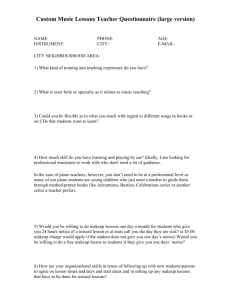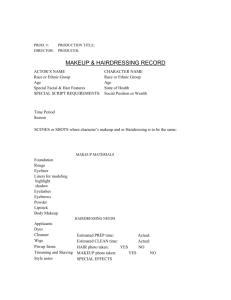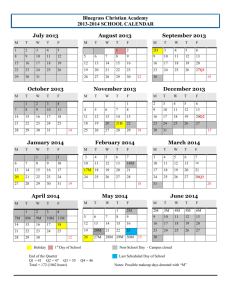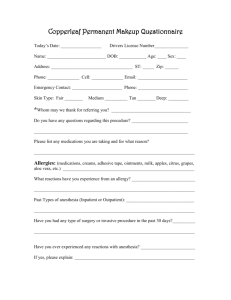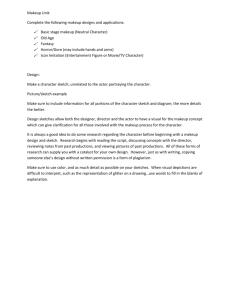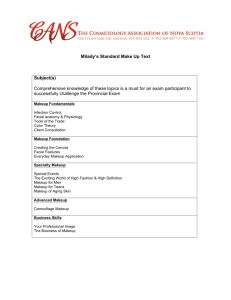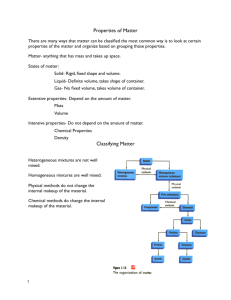Document
advertisement
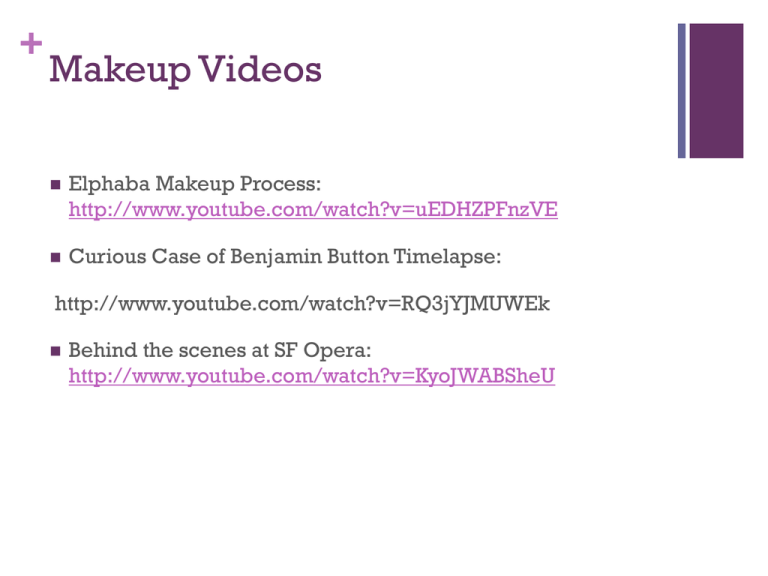
+ Makeup Videos Elphaba Makeup Process: http://www.youtube.com/watch?v=uEDHZPFnzVE Curious Case of Benjamin Button Timelapse: http://www.youtube.com/watch?v=RQ3jYJMUWEk Behind the scenes at SF Opera: http://www.youtube.com/watch?v=KyoJWABSheU + Stage Make-up Everything you need to know + Stage Make-up Sets the actor’s appearance Enhances on stage what the actor looks like Makes facial features easier to see by the audience Genetics, environment, health, disfigurements, fashion, age, personality Drawings + Renderings and Sketches—quick drawings to get the ideas down on paper Make-up Worksheet—assists in making sketches. Has places for colors and notes. Helpful for beginners Working Drawings—Show front view and side view. Very detailed draws of make up on the actor + Types of Make-up Cake Makeup—Most common in theatre today. Both dry and moist, pigmented material compressed into cake form. Comes in bases, highlights and shadows. Crème Makeup—moist, nongreasy foundation makeup. Does need powder to be set. + Types of Make-up Liquid Makeup—used in theatre, but very limited to body makeup. Difficult to blend. Dry Makeup—Makeup that is dry when applied to skin. Face powder is most common (used to set cake or crème makeup) + Types of Make-up Greasepaint—Common BEFORE cake and crème makeup. Applied usually wet and then smeared in. Does not do highlights and shadows well. Used with stippling. Spirit Gum—used to apply extra pieces of makeup and hold things on the face/body. + Application Techniques MOST IMPORTANT!! Highlights and Shadows!! Highlights—Facial highlights are those areas that reflect more light. Shadows—Facial shadows are the areas that reflect less. Highlights are a bit lighter than skin tone and Shadows are a bit darker. + The Human Face: Highlights & Shadows Highlights + The Human Face: Highlights & Shadows Shadows + Old Age & Illness Old Age: As people age their natural face lines deepen. Wrinkles!!! Shadows get bigger. Parts of face discolor, age spots/ liver spots. Lines are good here! + + Application Techniques Corrective Makeup—Used to enhance natural appearance or cover something that should not be there. Similar to everyday makeup. Stippling—Method of applying makeup by daubing or patting with a sponge. Gives the skin a look of texture (appears rough). Use a STIPPLING SPONGE + 3-D Makeup Nose Putty Derma Wax Gelatin Latex Prosthetics Hair (Beards and Mustaches) + Bruises, scars, burns & blood….. + Bruises, scars, burns & blood….. + Bruises, scars, burns & blood….. Rules of Thumb: Remember to always consider point of impact! Randomness good, uniform bad! Highlights first!!! Lightest to darkest colors, always! Fresh looks different than aged. Blood is always LAST; it doesn’t dry! Stipple sponges are your friend!!!! + Make-up Morgue Makeup Morgue—a collection of different parts of the face and body. Different looks for eyes, mouths, noses, hands, ears, etc. Can include old age, gore, hair, fantasy, animals, etc. Kind of like a scrapbook of different looks. + Makeup Morgue Activity You will work with in your design team to collect photos & images in your assigned area You will have 15min this class and 15min next class to collect them You need to collect 30 variety of photos & images and place them in Google presentation – Label them: MAKEUP MORGUE (class period) – (assigned facial feature or category) for example: MAKEUP MORGUE 2A – noses Only 4 images per slide Blow them up large enough to see Share with Mrs. C. – candace.clarke@sunnyvaleisd.com
